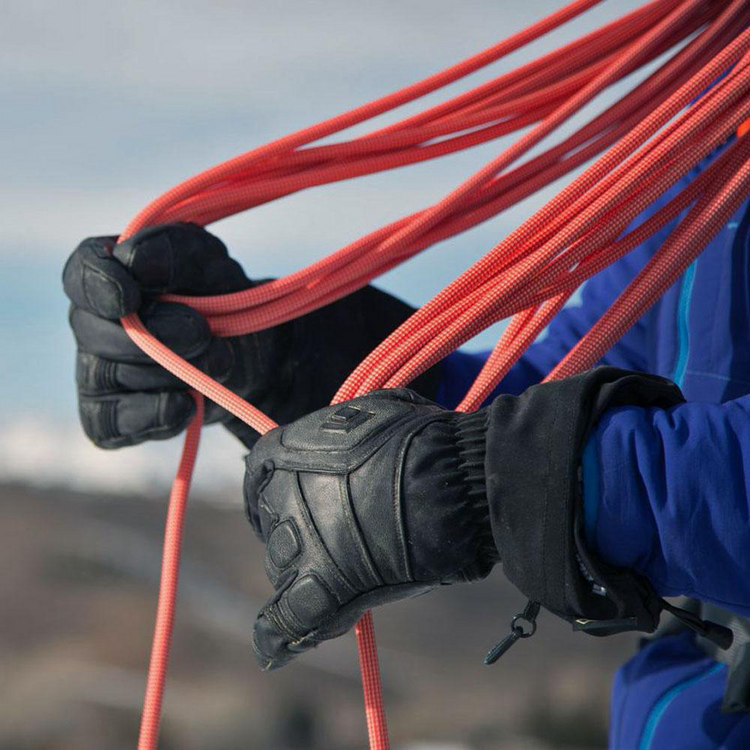If you’ve been mountaineering, skiing, or even hiking in cold weather you know how quickly your fingers get frosty. When you’re surrounded by civilization, warming up your digits might be as easy as putting in a handwarmer or grabbing hot cocoa in the lodge. But once you’re in the mountains, cold fingers become a much more serious issue. So what should you do to prevent freezing fingers? Gloves are the obvious answer, but with so many brands and types of gloves out there, it can get confusing. Once again, we’re here to simplify things!
The Three Glove System
Like most things in mountaineering, it’s a heck of a lot easier to plan ahead and avoid freezing fingers in the first place than it is to deal with them at elevation. In this case, preparation means having the right gloves, no matter the occasion. First up, you need to be aware of the climb you’re getting into. What are the conditions (i.e. will you be getting wet)? How technical is your climb, and does it require above-average finger dexterity? While all of this needs to be taken into account, the guides over at RMI Expeditions have been using a 3 glove system for years that works well for most mountaineering. This system consists of lightweight, medium-weight, and heavyweight gloves or mitts. While 3 pairs of gloves for one expedition might sound like overkill, there are really good reasons for having all three, as opposed to a single hybrid or layered glove system.
Lightweight Gloves
Let’s start with the basics. If you’re climbing during warmer months, lightweight gloves are what you’ll be wearing most of the time. Usually made of fleece or softshell material, these gloves will provide enough warmth to keep your fingers comfortable at lower altitudes while still ensuring a ton of dexterity. They’ll usually have a leather or synthetic palm for a better grip, and these days most will have a touch screen capable pointer and thumbprint. In addition to keeping your fingers warm, these will provide some much-needed UV protection while you’re on the glacier or snowfield, and ensure you don’t scrape up your fingers if you need to ice ax arrest.
Year after year, RMI Expeditions guides have chosen the Black Diamond Softshell Glove as their favorite glove, due to its great performance and no-frills design. The Outdoor Research Stormtracker and Black Diamond Gridtech Fleece gloves are also popular Guide Pick™ options.
Midweight Gloves
Alright so you’ve worn your lightweight gloves for most of the climb, but now you’re on the upper mountain, it’s 3 in the morning, and your digits are pretty frosty. This is where the midweight glove comes in. When you think of a classic ski glove, this is what we’re talking about; plenty of insulation but still a fair amount of dexterity. RMI guides typically prefer gloves with leather palms and backs, as they are more durable, windproof, and can be waterproofed repeatedly. Just keep in mind, you’ll still need to perform technical tasks (like fidgeting with carabiners or backpack buckles) with these gloves on, so dexterity is an important factor as well. Also, make sure that your gloves fit well before going on your climb! Too big and you become clumsy, too small and you risk cutting off blood flow to your extremities.
The top Guide Pick™ suggestion over at RMI Expeditions is and has been the Black Diamond Patrol Glove. A perfect combination of insulation, waterproofing, and flexibility, this has been the RMI workhorse glove for the last several years.
Heavyweight Gloves or Mitts
The third glove we highly recommend you have is a heavyweight glove or mitt. If you’re climbing in winter, there’s a good chance you’ll be wearing these quite a bit, but even in summer blizzard-type conditions or high winds can force climbers to use this level of protection. For heavyweight gloves, you’re going to be valuing insulation above all else, with dexterity taking second fiddle. That’s why this is the only category where mitts are alright, as keeping your fingers together in one insulated pocket can keep them warmer than traditional gloves. Again, waterproofing is important as well; if it’s cold enough to warrant breaking out the heavyweights, you definitely don’t want your fingers getting wet.
The overwhelming majority of RMI guides pick the Black Diamond Guide Glove as their heavyweight option. The next step up from the Patrol Glove mentioned above, the Guide Glove still allows for a surprising amount of dexterity while keeping your digits super insulated. We also love the Outdoor Research Alti Glove, built for harsh conditions with GORE-TEX protection.
That’s the 3 glove system! Now you know what to bring on your next mountaineering adventure.
As always, be sure to check conditions and gather beta on your route before following our advice. While the 3 glove system will work for most mountaineering environments, it’s still on you to do your own research!
Have a favorite glove you want to tell the world about? Let us know in the comments below!
Till next time,
Happy Climbing!








